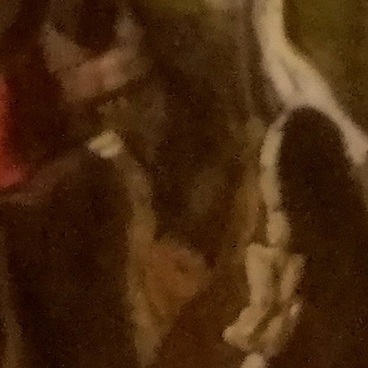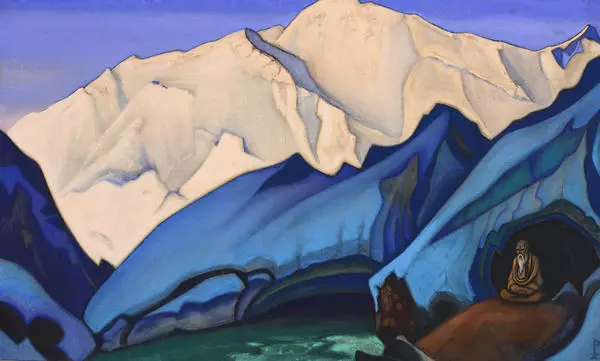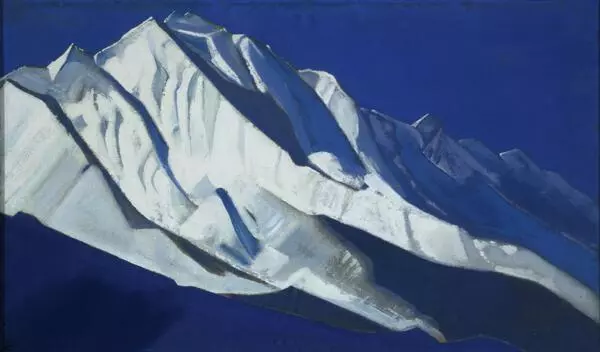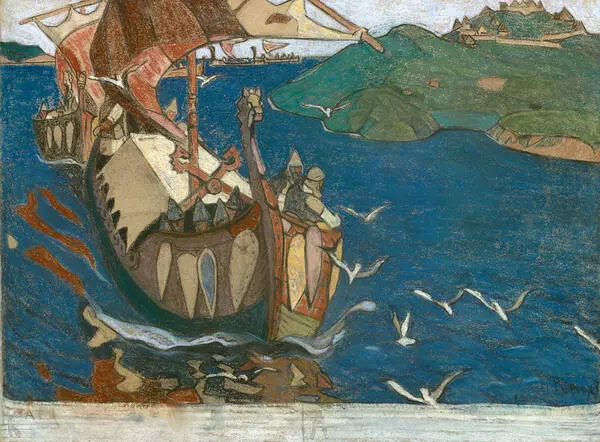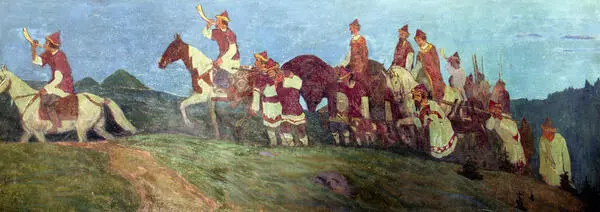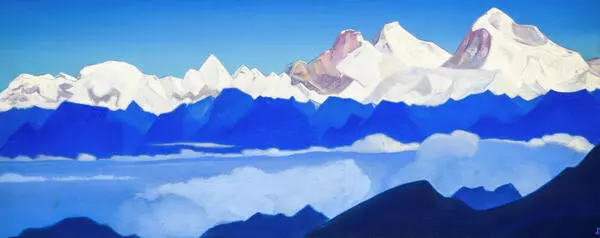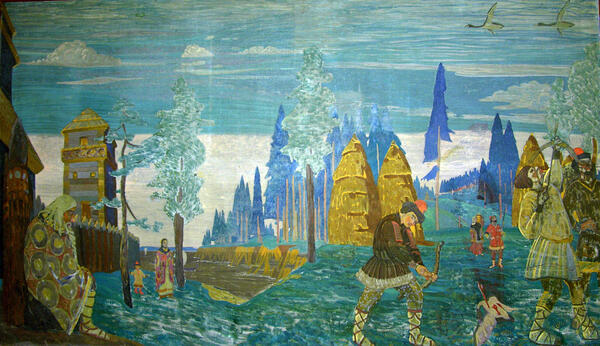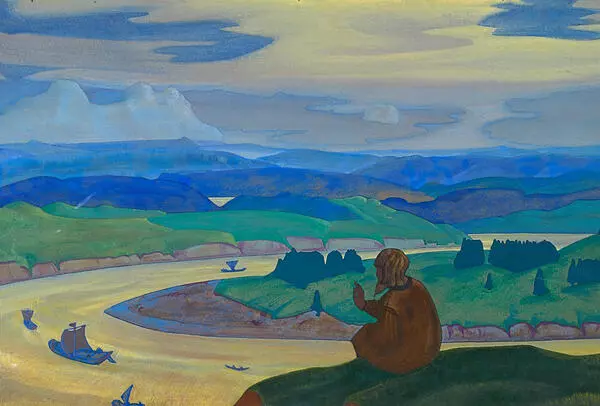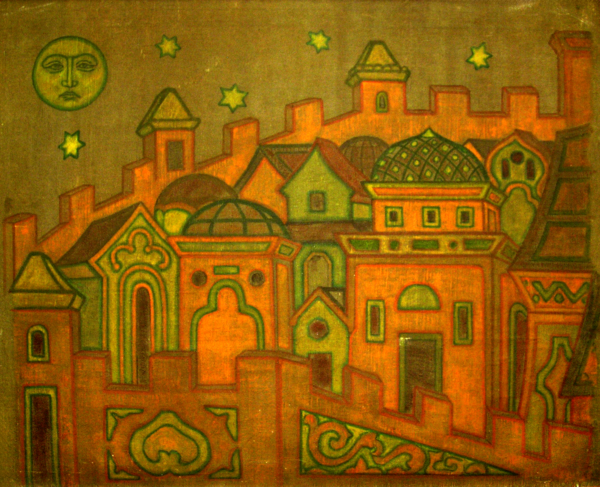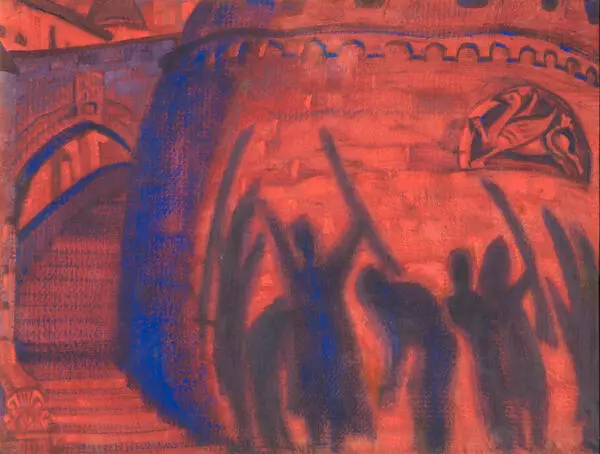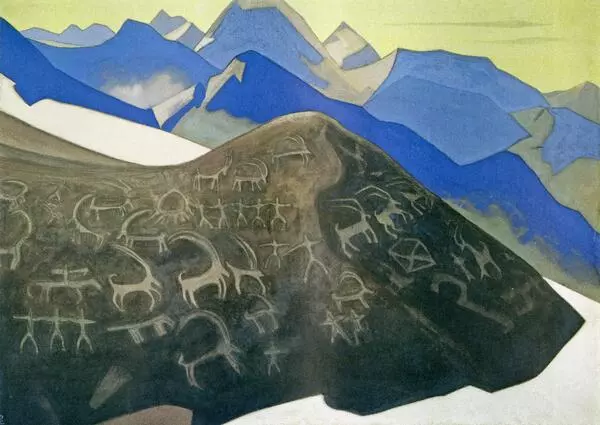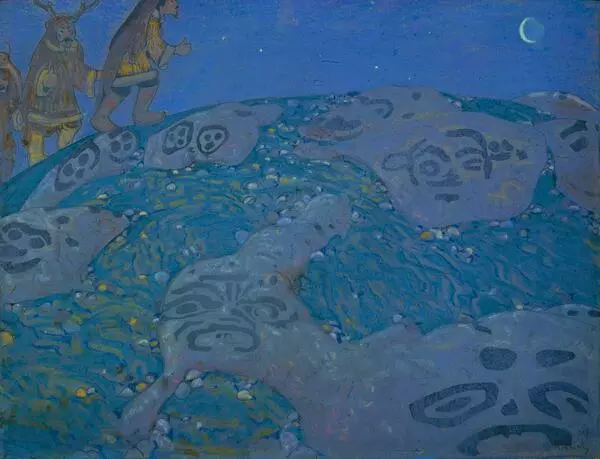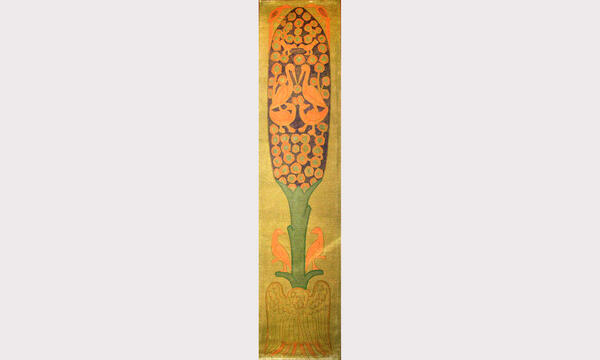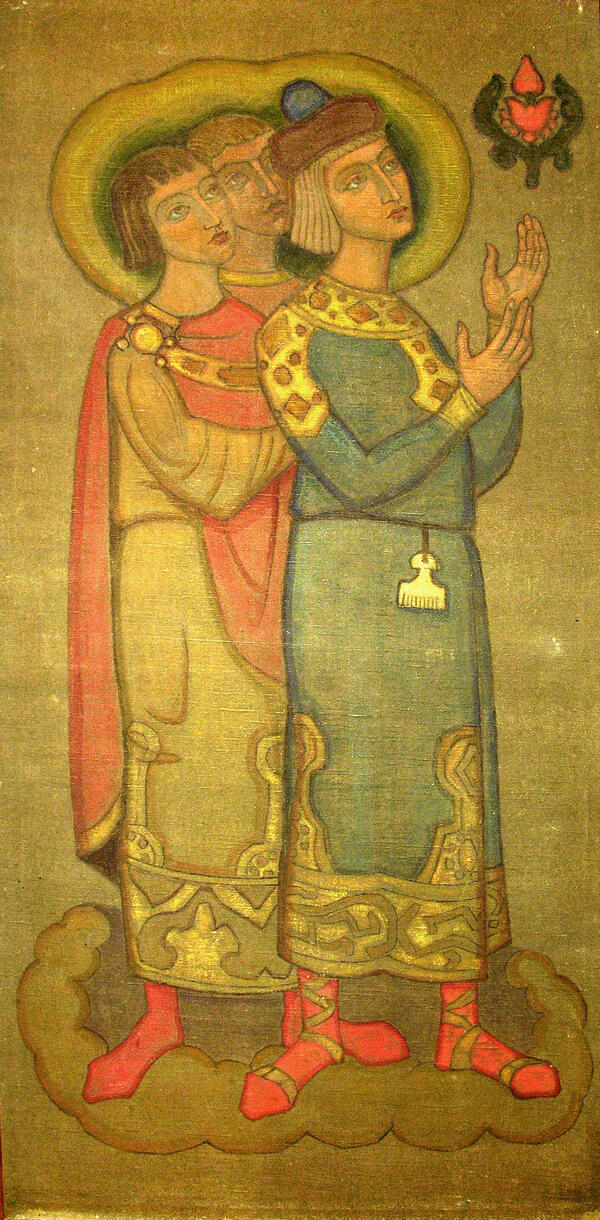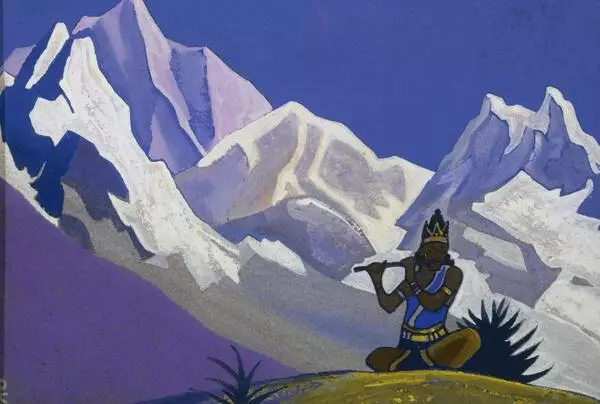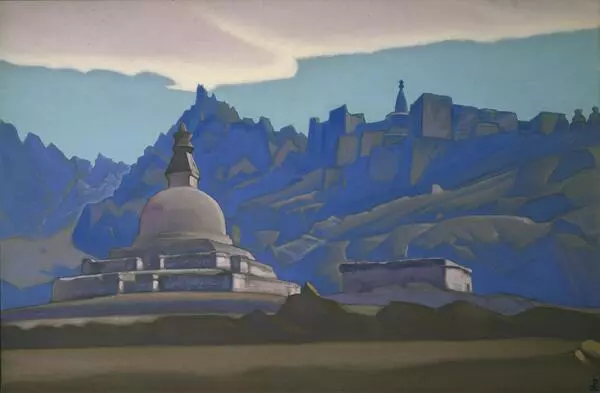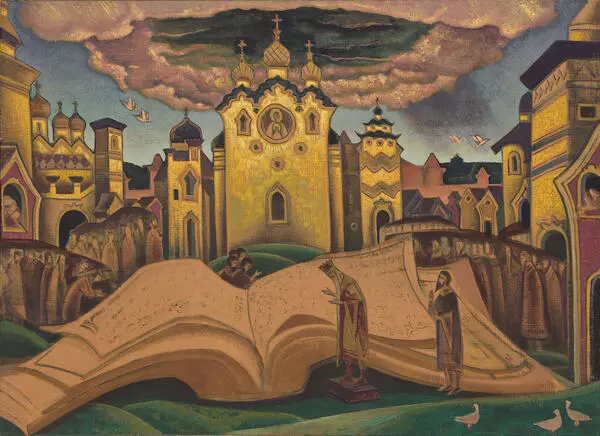The original style emblematic for all works of Nikolai Konstantinovich Roerich manifests itself starting from his very first works, be it the historical plots from the history of Ancient Rus’ (“Idols”, “Building the Ships”, “The wise men”s gathering”), or the multiple landscape paintings created by the artist during his Central-Asian’s expedition (1923-1928). The artist’s work in the spheres of monumental and scenic painting made a big impact in the formation of his unique style. Decorativeness, working with the big one-tone slabs of colour, a bit dimmed colours and the subtle lines are typical of these fields. All these features found their actualization in Nikolai Roerich’s art.
The artist’s work “Fantastic Landscape” has a second title, “Manu”s wisdom”. Its plot was taken from the legend about the Deluge which initiated the new start of human history. This event is described in the legends of many ancient nations. According to the Indian version, Manu was the name of the man surviving the Deluge. Once he caught a small fish and kept it alive at its request. He put a fish in the jar, but it used to grow very fast so Manu dug a pond for it. Soon the fish grew into a huge water monster with the horn on the top of its head. Nothing could threaten it any longer, so Manu freed it back into the sea. The fish warned its savior about the future Deluge. It told him to build a ship and wait for her return. When the Deluge started, the fish came back just like it had promised. Manu tied a ship’s rope to its horn and it led the ship to the top of the mountain rising above the water. When the water departed, Manu came down from the mountain and immersed himself into meditation. This is the moment depicted at the painting. All the lowlands are still flooded, the city at the background is destroyed. Manu brought the human race back to life. The Indian tradition attributes the creation of law to him as well.
The painting was created in 1916 for the Theosophical centre in Saint Petersburg. The Theosophical Society was founded in New York in 1875, and by the beginning of the 20th century it had its branches in Saint Petersburg, Moscow, Kaluga and other cities. The religiously mystical dogma of Helena Blavatsky mostly founded on the basis of the Indian philosophy (Buddhism, Hinduism, Brahmanism) was the foundation of the society. It explains the choice for the painting’s plot, as Nikolai Roerich made it before his visit to India which took place only in 1923.
The painting was first shown during the exhibition of the artistic movement “Mir Iskusstva” (the World of Art) in 1917.
The artist’s work “Fantastic Landscape” has a second title, “Manu”s wisdom”. Its plot was taken from the legend about the Deluge which initiated the new start of human history. This event is described in the legends of many ancient nations. According to the Indian version, Manu was the name of the man surviving the Deluge. Once he caught a small fish and kept it alive at its request. He put a fish in the jar, but it used to grow very fast so Manu dug a pond for it. Soon the fish grew into a huge water monster with the horn on the top of its head. Nothing could threaten it any longer, so Manu freed it back into the sea. The fish warned its savior about the future Deluge. It told him to build a ship and wait for her return. When the Deluge started, the fish came back just like it had promised. Manu tied a ship’s rope to its horn and it led the ship to the top of the mountain rising above the water. When the water departed, Manu came down from the mountain and immersed himself into meditation. This is the moment depicted at the painting. All the lowlands are still flooded, the city at the background is destroyed. Manu brought the human race back to life. The Indian tradition attributes the creation of law to him as well.
The painting was created in 1916 for the Theosophical centre in Saint Petersburg. The Theosophical Society was founded in New York in 1875, and by the beginning of the 20th century it had its branches in Saint Petersburg, Moscow, Kaluga and other cities. The religiously mystical dogma of Helena Blavatsky mostly founded on the basis of the Indian philosophy (Buddhism, Hinduism, Brahmanism) was the foundation of the society. It explains the choice for the painting’s plot, as Nikolai Roerich made it before his visit to India which took place only in 1923.
The painting was first shown during the exhibition of the artistic movement “Mir Iskusstva” (the World of Art) in 1917.
